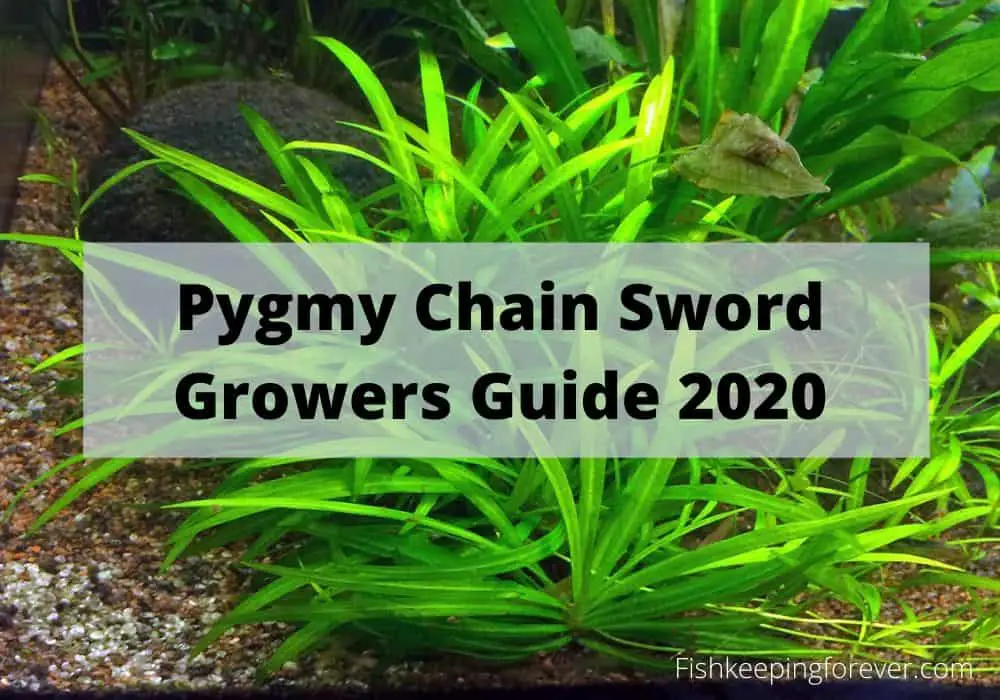Pygmy Chain Sword is a great little aquarium plant for injecting much-needed interest and cover into the foreground of your fish tank. It is fêted by the likes of world-famous Japanese aquascaper Takashi Amano, who is known for using this little plant in surprising ways in his dramatic aquatic environments.
Better still, Pygmy Chain Swordplant is not just for experts, as it is hardy and a good grower, so even the novice aquarist can obtain some really satisfying results and have something that can be cultivated and trimmed early on.
Variants of this plant are widely available and cost-effective, meaning that you can use it as liberally as you wish to cover the floor of your tank. It almost grows itself in many cases!
In this article, we will run through everything you need to know to successfully grow Pygmy Chain Sword as part of a thriving collection of aquatic plants.
Table of Contents
Name(s)
This popular aquarium plant has at least two major variants and is known by a variety of names in the regions in which it is found.
Its Latin name is Helanthium tenellum and it is a member of the Alismataceae water plantain family of aquatic flowering plants that grow either fully or semi-submerged.
They are also considered a type of Amazon sword. It is predominant in the Western hemisphere and can be called by any of the following alternate names:
- Dwarf Chain Sword
- Micro Swordplant
- Micro Sword
- Narrow Leaf Chain Sword
- Echinodorus Tenellus
- Alisma Tenellum
- Sagittaria Tenella
- Grassy dwarf sword plant
- Dwarf burhead
Description
Pygmy Chain Sword is native to the Americas where it grows fully or semi immersed in ponds, streams and other bodies of water. It is an annual species but maybe semi-perennial.
In the US, it is found in Texas through Florida and is distributed throughout Central America and the Caribbean. In South America, it is found as far south as Argentina.
The two major variants both grow well underwater in a tank. One is narrow-leaved and dark green in hue and the other spikier variety is a brighter green with broader leaves that taper to a tip. The leaf may be on a thin leaf stem or be indistinguishable from the stem in the broader leaved variety.
Micro Sword grows by forming whorls and producing daughter plants via suckers which is its means of propagation. Narrow Leaf Chain Sword can also produce a red tone in its foliage when grown underwater.
When grown outside of the water, the Dwarf Chain Swordplant tends to have thicker leaves, that become narrower when it is cultivated in a tank.
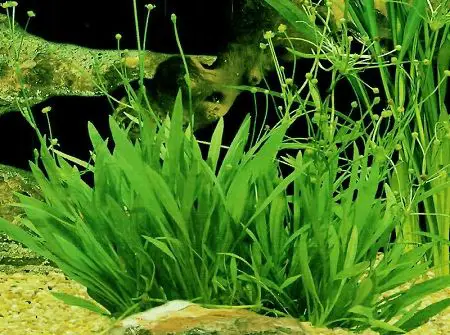
Dimensions
Dwarf Chain Sword can achieve a maximum height of 10cm in intense light, with typical growth of around 5cm with spidery underwater foliage. Leaf breadth can be between 0.1 and 1cm, depending on the type of Pygmy Chain Sword. Each plant typically carries 12-15 stems per bunch. Leaves can be up to 2-3cm in length.
Growth
As mentioned above, Pygmy Chain Sword is a great plant for beginners as it grows effectively and is easy to maintain. To keep your Dwarf Chain Sword happy all you need to do is supply plentiful light, carbon dioxide and fertilizer.
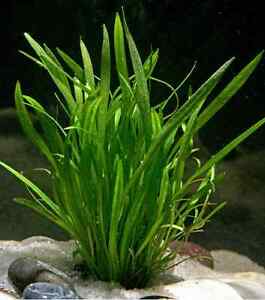
This winning combination will produce vigorous growth with carpeting throughout your tank. It is nutrient hungry and will establish a well-developed root network on your substrate. For optimal growth, it is well worth adding a fertilizer, though you may find yourself having to cut back and remove roots from excessive growth if you are too successful.
If you are planting an emmersed Dwarf Chain Sword, you will notice a melt back in leaf volume as the plant transitions to underwater growth. Once established in your tank, it will grow low and prioritize sending out runners to carpet your substrate.
More intense lighting (2-3 watts per gallon with full-spectrum bulbs for 14-16 hours per day) should accelerate the carpeting process when submersed rather than vertical growth. If lighting is persistently low it will become sparse.
Optimum water chemistry
Pygmy Chain Swordplant is generally tolerant of a broad range of aquatic conditions, though acid conditions less than pH 6 may start to suppress its growth.
Its optimal water chemistry has a pH range of 6.5 to 8 and water hardness GH value range of 2-12dgh and it is generally tolerant of a range of conditions.
Some varieties are more tolerant than others of brackish water meaning you may want to experiment with it as Carpet Grass for a Brackish aquarium environment.
Test your water chemistry with a Freshwater Aquarium Test Kit from API
Optimum temperature
Pygmy Chain Sword will grow in a range of temperature conditions with no complaints. Its optimum temperature for growth is between 24-28 Celsius. You should not encounter problems cultivating Dwarf Chain Sword in a cold water tank, but temperatures that are too low will inhibit the formation of runners.
Substrate for growth
It is important to remember that despite the claims and formulations, most substrates impart little in the way of ongoing nutrition to aquatic plants. They do, however, provide a medium for plants to establish themselves by giving the roots something to hold onto.
Pygmy Chain Sword is capable of establishing itself on a range of substrate materials. Top picks include sands, Fluval substrates and aqua soils. Look for mixture of 25% clay and laterite for good results.
You will need supplemental feeding and have options including:
- Sparing addition of liquid feed
- Root tab fertilizers
Dwarf Chain Sword has great nitrogen tolerance and will put any excess in your tank to good use on its own growth.
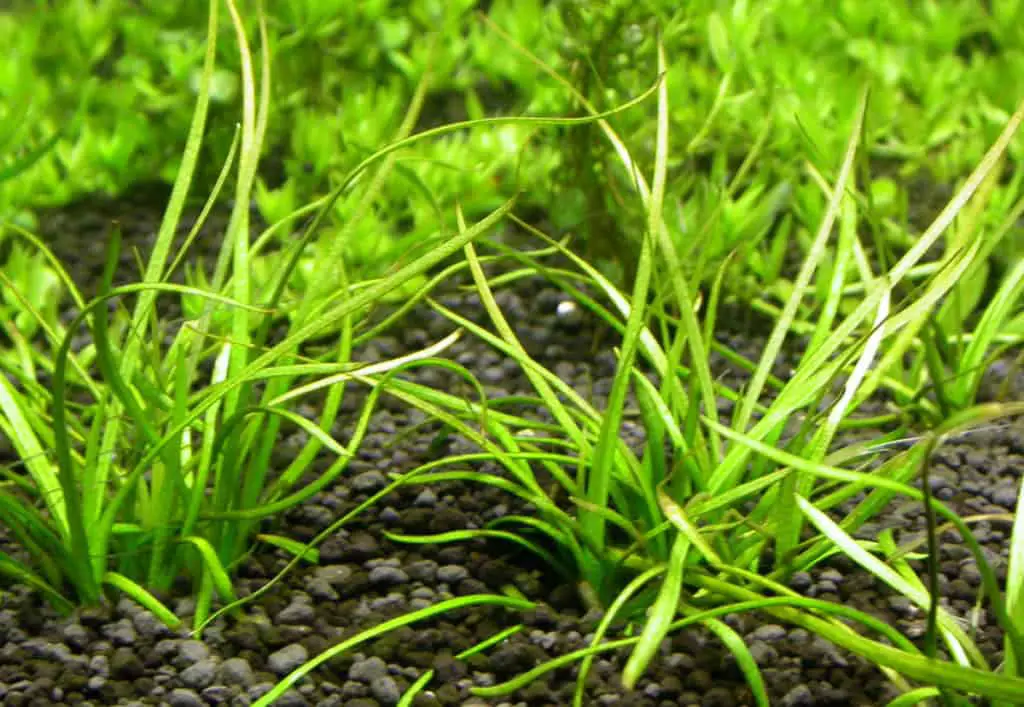
Aquascaping with rotala rotundifolia
Pygmy Chain Sword is a foreground plant and offers great interest and texture as part of your aquascape project. It is thoroughly recommended to the beginner aquascape as you will have such positive results. You can use it on both closed and open aquaria.
Plant Pygmy Chain Sword to fill up bare spots on your tank with its spidery foliage that will provide lots of hiding places for tiny fish and fry.
It can be used to create a great habitat for a range of fish and is suitable for raising shrimp as it will aid in purification of the water, buffering water chemistry and providing a large surface area, great for hosting peaceful community fish. It can be confidently included in shrimp breeding tanks.
When well lit and fed its growth is vigorous, so you should be able to rapidly enjoy its grassy carpet and perhaps have some cuttings to share.
You will need to proactively manage any overgrowth by pulling up the runners on places you do not want the Dwarf Chain Sword to grow and cutting it back to just above the nodes.
Plant in a rich and perhaps colorful clay or soil-based substrate and you will be delighted with its vivid green display. They can be planted simply by unpacking to expose the roots and placing the roots in a 3cm hole in the substrate made with your fingertip.
High light exposure can cause algal growth on the leaves but this can be polished off by a voracious fish or two.
As Pygmy Chain Sword is a low grower in tanks you can grow larger Amazon Sword plants behind to add great dimension to your tank. Dwarf Chain Sword also pairs well with Echinodorus Ozelot, Weeping Moss, Java Spring Moss or Dwarf Sagittaria Subulata, for a low maintenance, but attractive aquascape.
An attractive red tone can sometimes be achieved with this plant by adding feeds that include supplemental iron.
Propagation
Pygmy Chain Sword will self-propagate by producing suckers and runners along your substrate surface. This gives rise to daughter plants that grow attached to the parent.
Once daughter Dwarf Chain Swords are half the size of the parent, they should be cut and separated from the parent to become established on their own as they will have adequate rooting.
If you want to remove daughter plants, cut them at the runner and gently pull on them to lift off their roots.
Safety to fish
Pygmy Chain Sword is not known to be toxic to fish or shrimp and is favored by aquarists and shrimp breeders due to its safety and beneficial effects on tank water chemistry.
It has a water purifying effect and when carpeting your substrate, its extensive root network will mop up excess nitrogen from waste, fish food and fertilizers, preventing harmful nitrogen overload.
Harmful build-ups of anaerobic gasses are also mitigated by this plant. It is edible and your fish can nibble away at it without damaging your aquascaping, as it is such a good grower. Algal growth on the leaves can also be polished off by certain types of fish.
Rounding up
Pygmy Chain Sword is a great starter plant for providing good coverage and interest in your aquarium. It’s bright green hue can also be accented with red tones if you choose to add iron and offers easy maintenance across a manageable range of water and temperature parameters. This plant not only looks good but fish and shrimp will love it too!
- Best Aquarium Plant Substrate Review 2022
- 18 Benefits of Marimo Balls ( How many per Gallon? )
- 11 Best Plants for Betta fish
- Top 7 Best plants for baby fish
- 9 Best Plants for Guppies ( Freshwater Aquarium Plants )
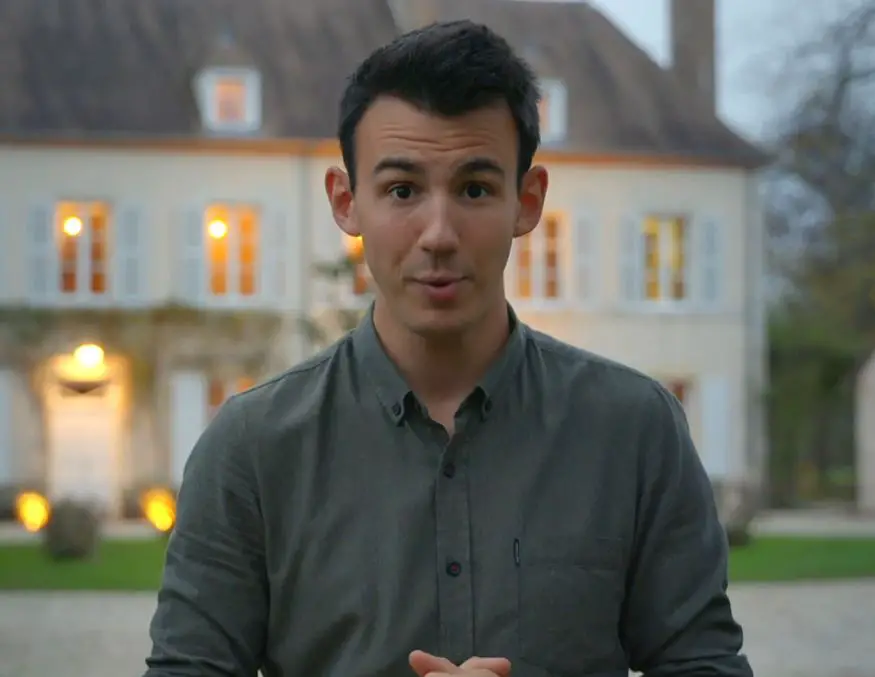
I have been working in the tropical fish industry for over 30 years now and I’m still learning. Everyday is a school day in this hobby. In my spare time I play golf very badly!


